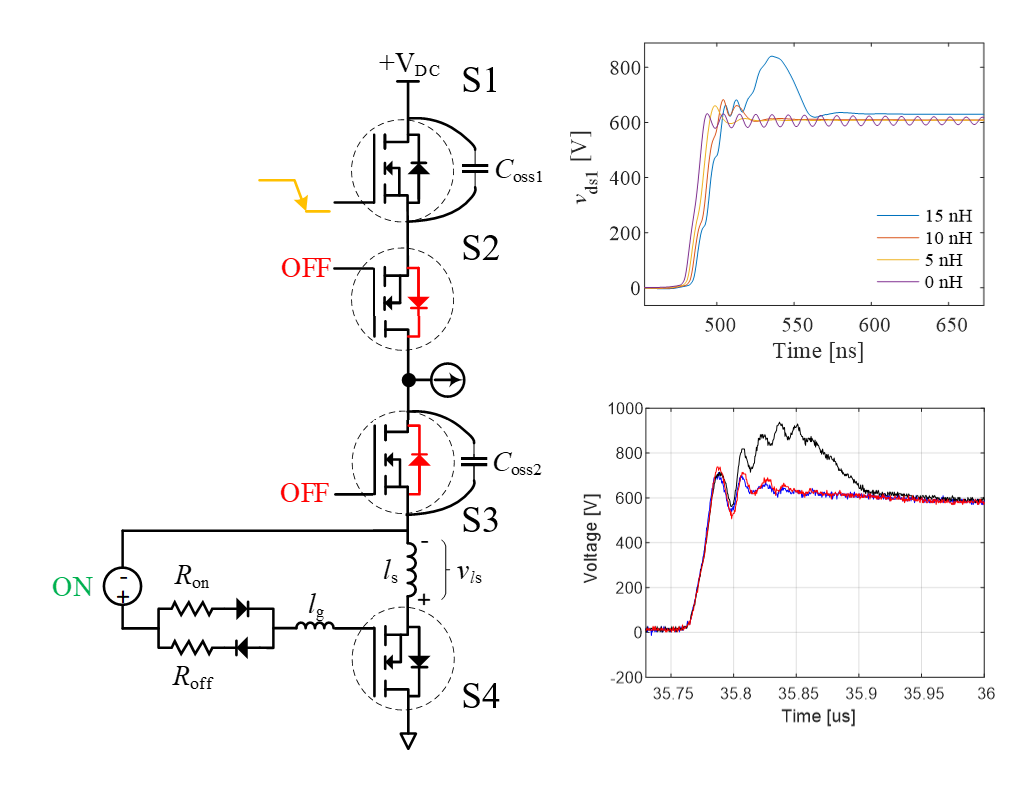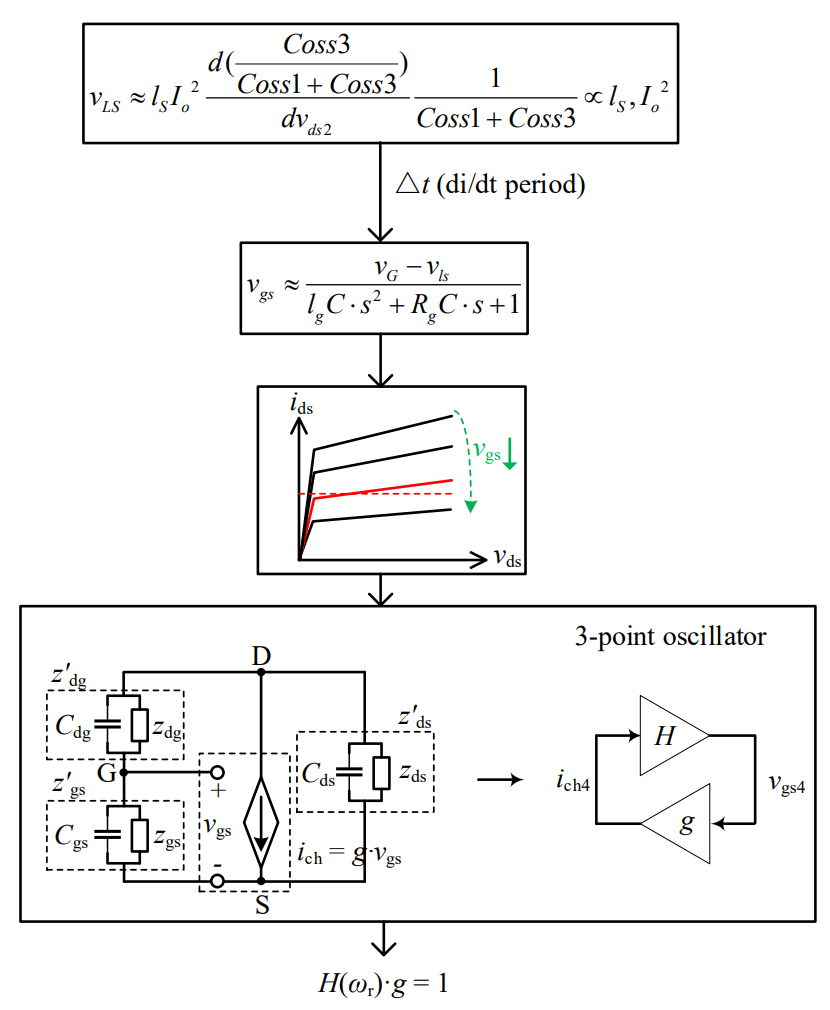LIBRARY
Common-Source Inductance Induced Voltage Overshoot and Self-Sustained Oscillation in Active Bidirectional Switches

Shown in Fig. 1 is a typical commutation phase-leg which consists of two bidirectional devices. The phase current is being commutated from the top branch, S1 and S2, to the bottom branch, S3 and S4. Assuming that VDC > 0 and phase current flows out of the phase-leg, S3 and S4 act as the active and synchronous devices respectively. S2 should be in an off state and S4 in an on state, assuming a current-based commutation strategy is adopted. The LT-Spice simulation results in the top left of Fig. 1 show the voltage across S1 during the turn-off transient. As the CSI increases, a giant overshoot voltage occurs. The phenomenon is also observed in experiments as shown by the bottom graph in Fig. 1.
The CSI in S4 is found to be the major cause of this unusual overshoot voltage. In the S1 turn-off transient, the current slew rate, di/dt, turns the CSI into a voltage source, realizing releasing the gate charge of S4. The voltage across the CSI is proportional to the inductance value, Ls, and the output current squared. It is also highly dependent on the nonlinearity of the device output capacitance, as shown in Fig. 2. With the increase of the drain-source current and the drop of the gate-source voltage, it is possible that S4 is dragged into saturation. If that occurs, S4 becomes a Vgs-controlled current source and the entire commutation phase-leg resembles a three-point oscillator. If the Barkhausen criterion, open loop gain equal to 1, is met, the circuit becomes unstable and can result in a giant voltage overshoot as shown in Fig. 1, or even constant self- sustained oscillation.























































































